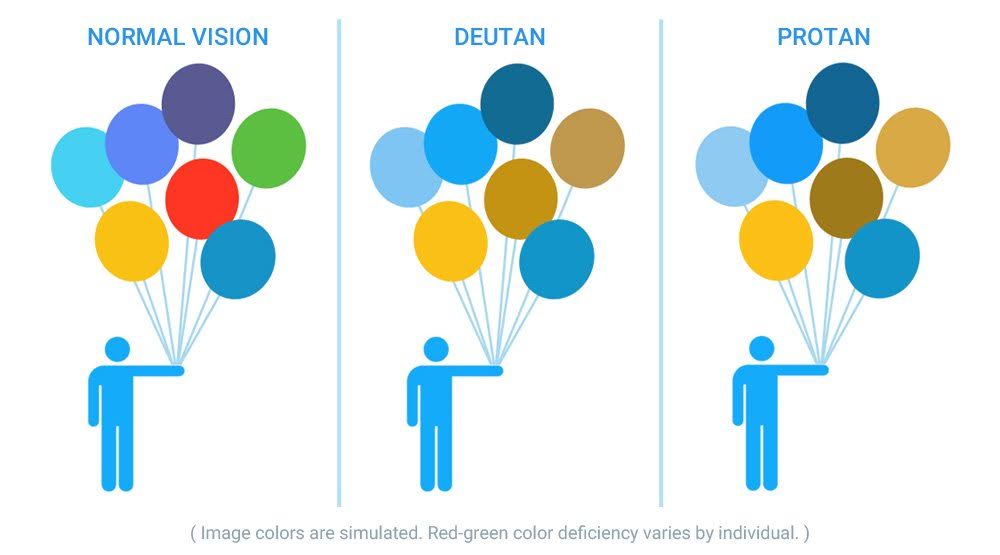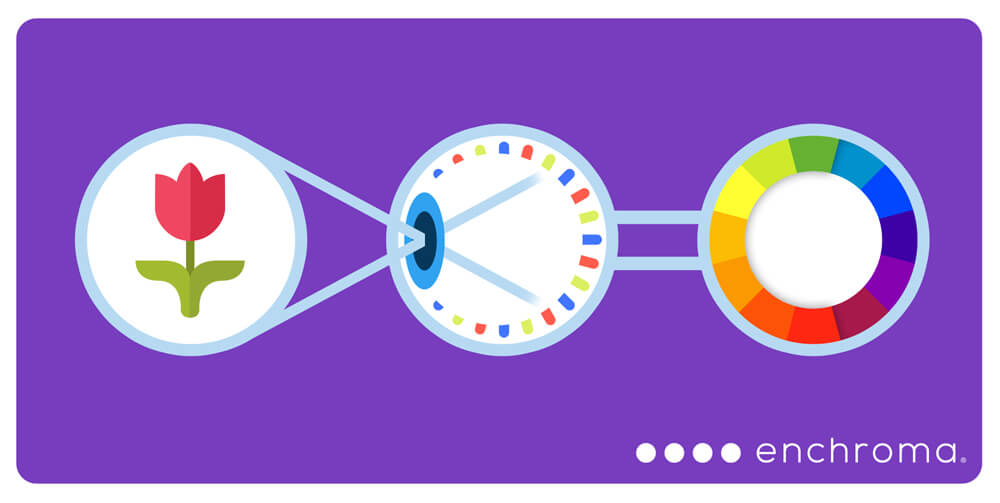Part optics, part neuroscience, Enchroma unlocks a new world of color for people with color blindness. Their glasses are engineered to make you look good, too, so you can make them a seamless part of your everyday routine. Visit our optical department or contact us today to learn more about our color vision eyewear solutions.

It’s All About the Lens
People with color blindness perceive color differently than people with normal color vision. Rather than receiving distinct visual information from the cone cells in their eyes, they receive overlapping signals, which can cause difficulty in seeing or distinguishing between certain colors. For instance, shades of red, brown, and green can look confusingly similar. Enchroma lenses are based on an advanced light filtration technology that makes certain colors along the visible spectrum more distinct. By refining the light before it reaches the eye, the eyes can receive the color information they need to communicate the correct signals to the brain.
Neuroscience Never Looked So Good
But in creating a solution for color blindness, Enchroma discovered that building an advanced lens is only half the battle. Color vision has as much to do with how eyes capture light as it does with how the human brain constructs our view of reality. Our brains adapt over the course of our lives—a concept called neuroplasticity—whether it’s learning a new language or acquiring a new skill. From birth, context and language affect our understanding of color, along with the physical visual signals our eyes relay to our brains. What does all of this mean for a person trying Enchroma glasses for the first time? Can a pair of glasses actually change the way our brain is wired?

See For Yourself
We believe that through physical exposure to richer color information, it’s possible to develop and expand the visual processing centers in the brain. But, because everyone’s brain and eyes are different, it can take some people longer than others to experience these effects. That’s why we encourage each person to take the time to explore their individual experience with the Enchroma eyewear. With regular use across a variety of situations, Enchroma glasses can reveal more brilliant, vivid colors and also help our adaptable brains see and understand a more colorful world.

Technology
Enchroma uses a patent-pending technology that filters certain wavelengths of light so that previously confusing colors appear more separate and clear. Our medical-grade lenses—effective for over 4 out of 5 cases of color blindness—provide the maximum amount of color enhancement possible, without compromising color balance, color accuracy, or visual comfort.

Facts about Color Blindness and Enchroma
- There are an estimated 300 million people in the world with color vision deficiency.
- 1 in 12 men are color blind (8%).
- 1 in 200 women are color blind (0.5%).
- Color blindness is typically inherited genetically and carried recessively on the X chromosome.
- While color blindness is often considered a mild disability, studies estimate that two-thirds of people with CVD feel it’s a handicap.
- Red-green color blindness doesn’t mean only color confusion with red and green colors, but the whole color spectrum can cause confusion.
- Enchroma glasses are the only specialty eyewear that alleviates red-green color blindness, enhancing colors without the compromise of color accuracy.
- Enchroma started in 2010, after ten years of R&D.
- Enchroma emerged from three National Institutes of Health (NIH) SBIR funded studies on the feasibility of correcting color vision deficiency.
- A father can’t pass his red-green color blindness on to his sons.
- If a woman is red-green color blind, all her sons will also be color blind.
- John Dalton wrote the first scientific paper on color blindness. Color blindness is also referred to as Daltonism.
- It’s extremely rare, but it’s possible to have normal color vision in one eye and color blindness in the other eye. This is called unilateral dichromacy.
- The popular “red means bad and green means good” is a poor design for people with color blindness. A better choice would be to use red–blue and yellow–blue color combinations.
- Many people with color blindness cannot tell that the power connector on a MacBook changes color.
- Lots of color blind people are surprised to find out that peanut butter is not green.

